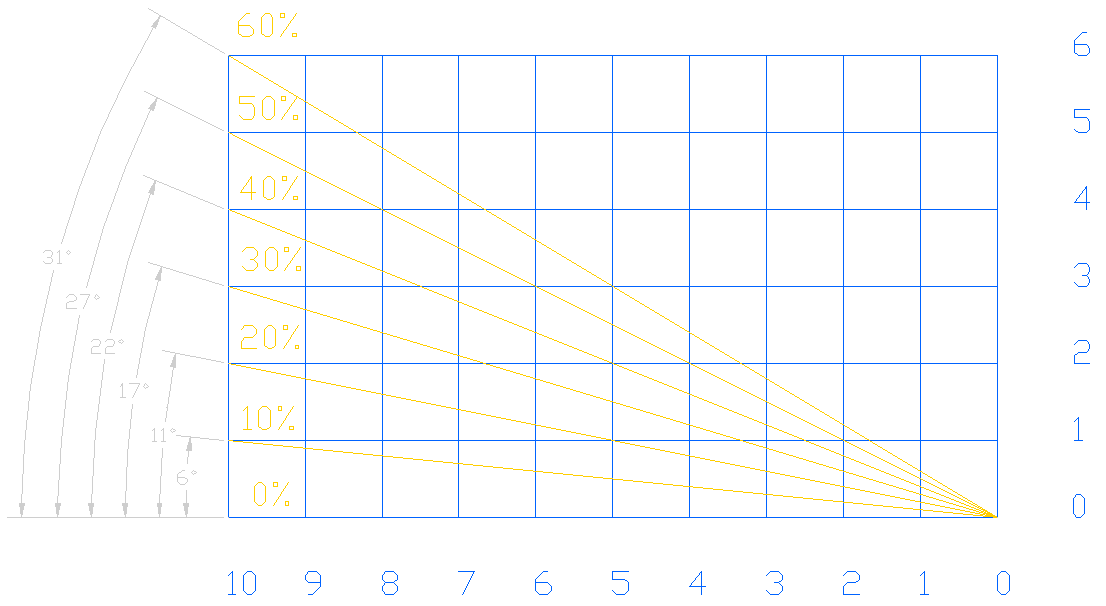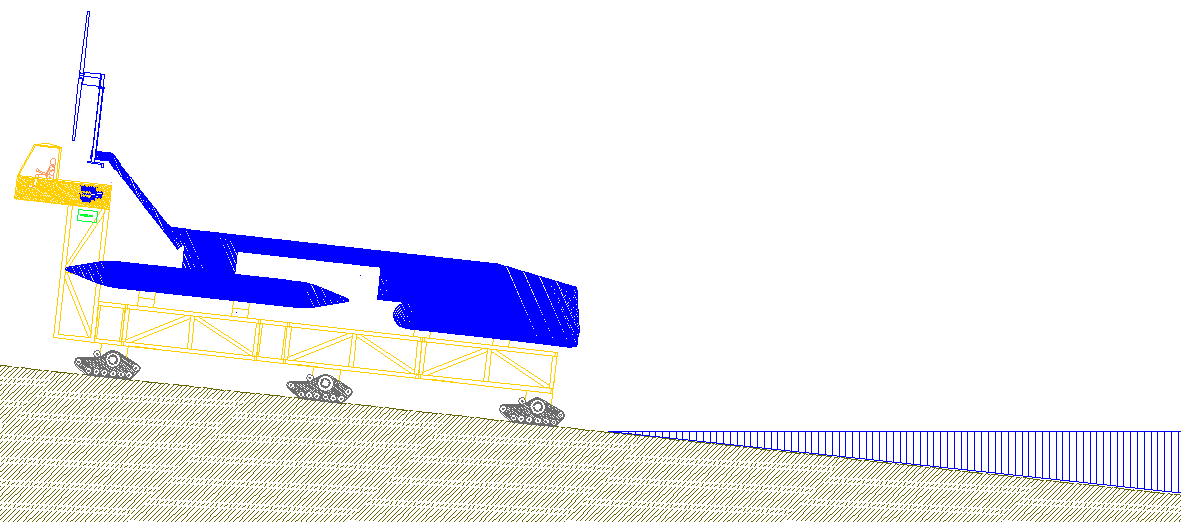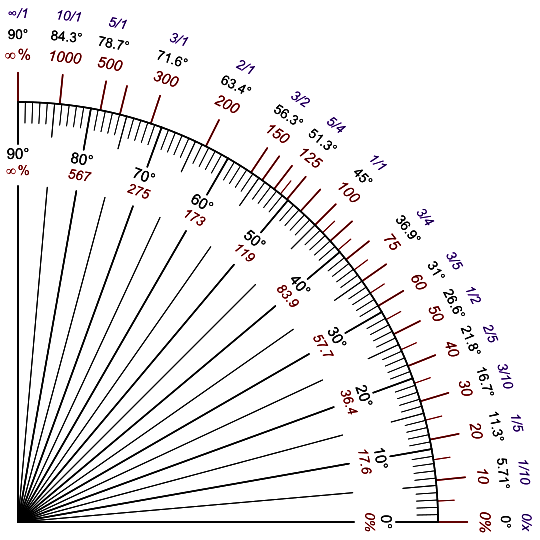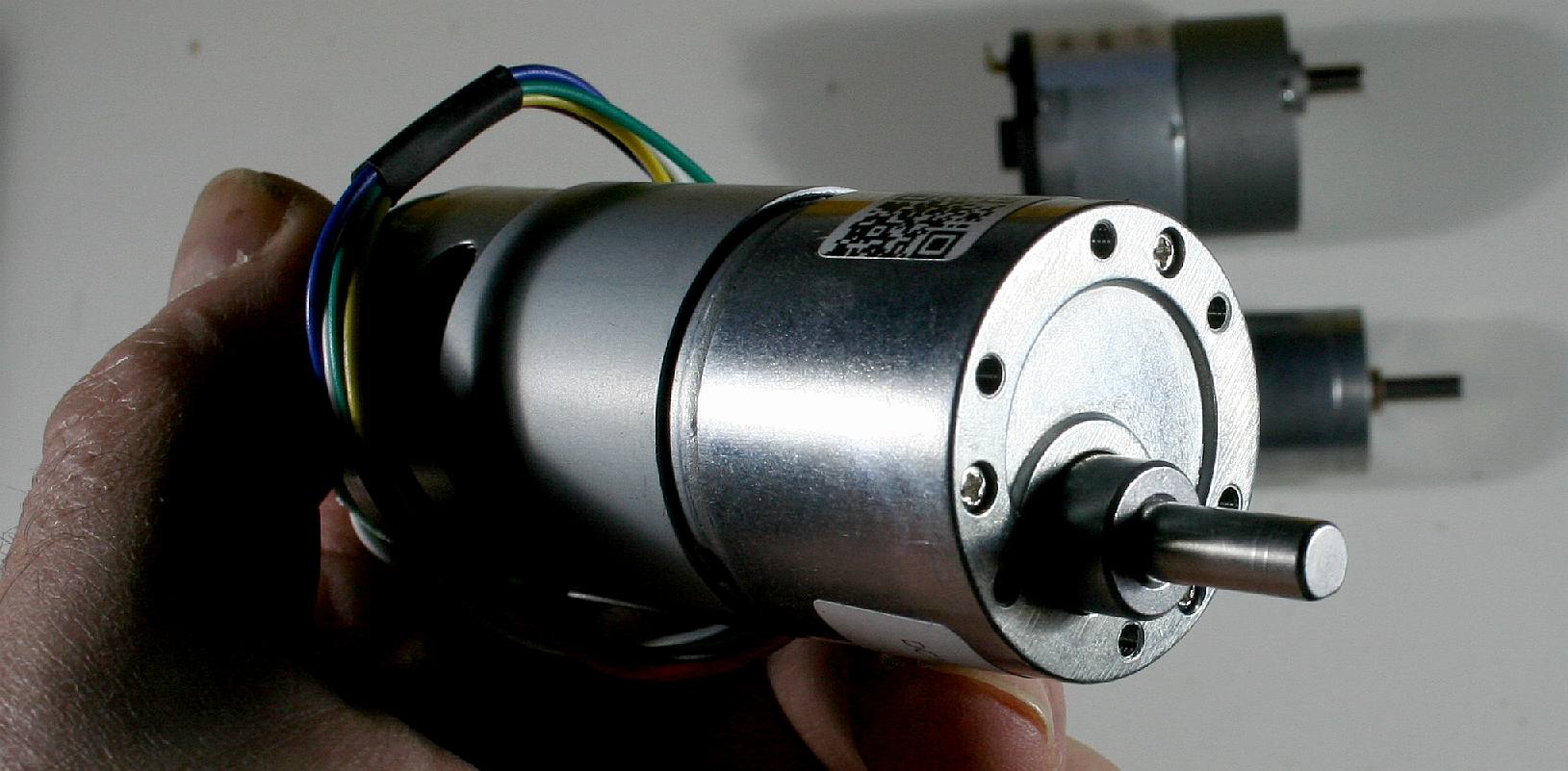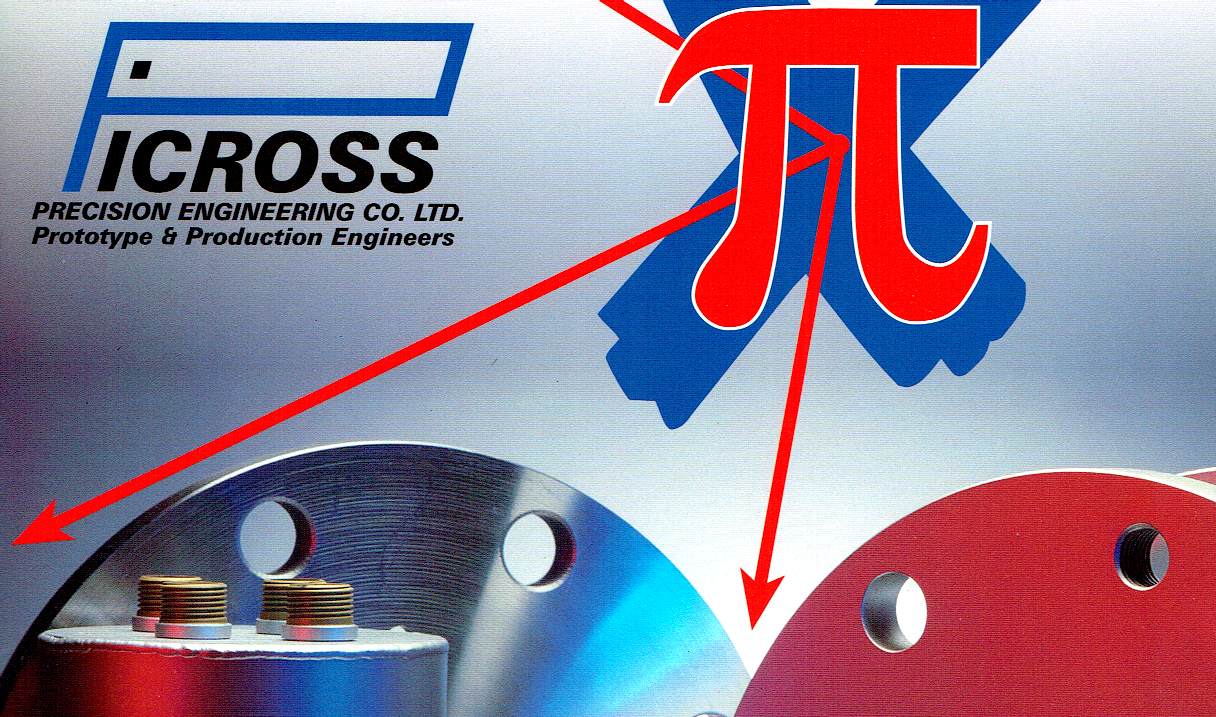|
BEACH CLIMBING ABILITY
ABOUT - CONTACTS - CROWDFUNDING - DONATE - FOUNDATION - HOME - A-Z INDEX
GRADIENT CHART - In this diagram you can see the relationship between a 1:10 slope as being a 10% incline @ roughly 6 degrees, whereas a 30% incline is roughly 17 degrees.
Gradient or steepness of a slope is commonly measured in three ways:
EXAMPLE: If you had a beach that went up by 10 meters over a distance of 100 meters, you would divide the 10 meters by 100 meters to find the slope equals 0.10. Then multiply the 0.10 by 100 to find the gradient to be 10 per cent.
BEACH (HILL) CLIMBING ABILITY
To calculate the power required for a pure vertical lift you need to know that: 0.746 kW (1 horsepower) = 0.305 meters in one second (1ft in 1sec). This is basic information for designing cranes and almost any machine that moves something. It was based on the ability of a real animal to lift or pull a load, long before internal combustion engines were invented. A vertical lift of 0.305m/sec would then require:
2,240
x 100 = 224,000 / 550 = 407hp or 303kW
For our 100 ton (total load)
amphibian @ 1% gradient that equates to: 2,240 lbs (1,016.4 kg) of gravity force, or 4 horsepower - just to stand still on a 1%
slope if you have wheels with good bearings (and no brakes).
These are simplistic examples.
As we
may need to be able to deal with up to 30% slopes on a very
bad day, we are looking at 120 hp (90kW) as the base motor output + the power to move our load up the beach in a reasonable time and that means speed of travel. In this case
2 - 5mph would be more than adequate, equating to between 300-400kW or (400-535hp).
This is for the 100 ton AmphiMax. The smaller AmphiMax would
need half that.
BEACH LAUNCHING SEQUENCE - Here we see a SeaVax 30 ton filtration boat piggy-backed on an AmphiMax boat launcher as it trundles down a 7 degree beach (10% gradient 1/10) in relation to sea-level, into the sea to begin operations.
Anything more than a 11 degree beach (20% gradient 1/20) and traction becomes an issue that only caterpillar tracks may tackle. AmphiMax could not climb a 22 degree beach (40% gradient). We doubt if anything could without a lot of difficulty. A 31 degree beach = a 60% slope. See Ice Cold in Alex; a WWII film where they hand crank a truck up a steep sand dune. The steepest roads in the world are Baldwin Street in Dunedin, New Zealand and Canton Avenue in Pittsburgh, Pennsylvania. The Guinness World Record lists Baldwin Street as the steepest street in the world, with a 35% grade (19°) overall and disputed 38% grade (21°) at its steepest section. The Pittsburgh Department of Engineering and Construction recorded a grade of 37% (20°) for Canton Avenue.
The AutoCAD drawings of AmphiMax and SeaVax on this page are Copyright © 26 May 2018 Cleaner Ocean Foundation Ltd and Bluebird Marine Systems Ltd. All rights reserved.
The grade (also called slope, incline, gradient,
mainfall, pitch or rise) of a physical feature, landform or constructed line refers to the tangent of the angle of that surface to the horizontal. It is a special case of the slope, where zero indicates horizontality. A larger number indicates higher or steeper degree of "tilt". Often slope is calculated as a ratio of "rise" to "run", or as a fraction ("rise over run") in which run is the horizontal distance and rise is the vertical distance.
WHY IS AMPHIMAX SO IMPORTANT TO THE SEAVAX CONCEPT ?
The AmphiMax is not just a launch and recovery machine, it is an essential development tool for Seavax. We can think of no quicker way to take a boat out of the ocean into a dry dock situation anywhere in the world to allow engineers to fit alternative heads for experimenting full size.
The Amphimax has all the equipment built in to allow a team of engineers to fabricate parts, change machinery and even repair a damaged hull using welding equipment, compressors and generators that are part of the portable dockyard.
DIAGRAM - This is a useful illustration of grades (percentages), angles in degrees and ratio for easy reference.
LINKS & REFERENCE
https://en.wikipedia.org/wiki/Grade_%28slope%29
540 MOTOR & GEARBOX - The output speed from this motor and gearbox combination is 22 RPM. The 6mm output shaft means a bit more machining at this end, but we feel that it is worth having a reserve of power for our experiments.
PRECISION - Some of the moving parts needed to be engineered beyond the capacity of our workshops. We were very fortunate to have a comprehensively equipped precision engineering company on our doorstep. Picross offer a world class development service from prototype to production. This includes the latest CNC turning and machining centres, precision Tig welding, vacuum leak testing, barcoded bespoke labelling and powder coating, all at competitive prices.
Picross Precision Engineering Co Ltd. 16-18 Lister Road, Eastbourne, BN23 6PU, UK. Tel: 01323 507322 Email: sales@picross-eng.com
AMPHIBIOUS LAUNCH - AMPHIMAX - CHASSIS - COSTINGS - DIESELS - DRIVE - FLOATATION - HILL CLIMBING - HYDRAULICS LAUNCH SITE SX - MODEL 1/20 - MOTORS - SUSPENSION - TIMETABLE - TRACKS - TRAILER - VIBRATOR - WHEELS
This website is provided on a free basis as a public information service. Copyright © Cleaner Oceans Foundation Ltd (COFL) (Company No: 4674774) 2019. Solar Studios, BN271RF, United Kingdom. COFL is a charity without share capital. The names Amphimax™, RiverVax™ and SeaVax™ are trademarks.
|
